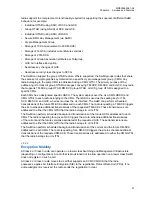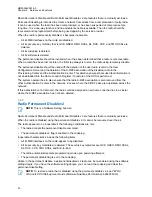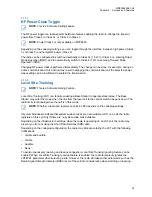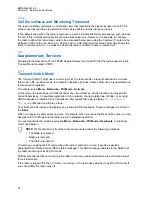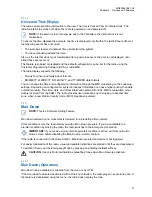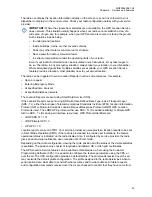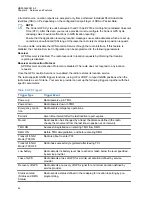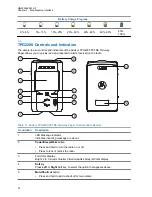
2.16
Status Remote Control
Status Remote Control is a feature that provides limited control of the radio, unlike Short Data Service
(SDS) Remote Control.
Only one type of remote control can be active on a radio; either SDS or Status.
The following tasks can be assigned remotely to a radio:
Play loud tone until user interaction
The radio plays a loud tone as in the Man Down feature until you unlock the keypad (if needed)
and press the appropriate soft key labeled
Exit
. The tone is played through the speaker even if an
accessory is attached.
The tone is not emitted when the radio is in one of the following states:
• Temporarily disabled
• Pseudo Off Mode
• Ambience Listening Mode
• Transmit Inhibit Mode (TXI)
• Emergency Mode
Send firmware version and TEI
The radio sends back an SDS message with its firmware version and TEI.
NOTE:
If the sending Individual Short Subscriber Identity (ISSI) is not on the Allowed ISSIs list,
the receiving radio ignores the task.
2.17
Call-Out
NOTE:
This is a Software Selling Feature.
For those who use DMO mode, you are recommended to apply DMO SCK for data
confidentiality.
A Call-Out is an alert sent to one or many recipients when an incident requires immediate attention.
The Call-Out message can include an instruction to use a different talkgroup during the Call-Out
or remain on the attached talkgroup. The timestamp of each Call-Out message is display on your
radio. When configured in the Customer Programming Software (CPS), you are also able to group or
ungroup Call-Out messages. You can select from a list of up to 1120 preprogrammed alphanumeric
aliases each of which corresponds to a status value.
The types of Call-Out alerts are:
Normal
An alert message sent by a dispatcher either to a single radio or to a group of radios.
Storm Plan
An alert message sent by a dispatcher to a group of radios. To raise its reliability, it is sent several
times. You are not able to respond to the Call-Out alert and any key press takes you to the
information phase.
Simple Call-Out
An alert with the functionality similar to full Call-Out but without the information phase. There are
two types of Simple Call-Out:
With user receipt
The Call-Out mode is ended when the acknowledgment timer runs out, or when you select
Accept
,
Reject
, or
Standby
. When you have responded to call out alert to the sender ISSI, pager shall auto
MN003465A01-AF
Chapter 2 : Services and Features
40


